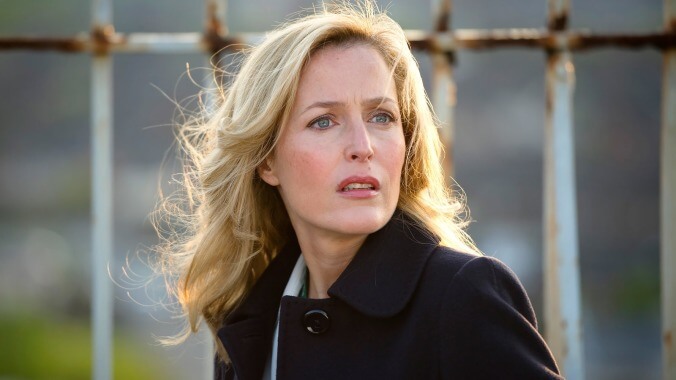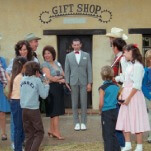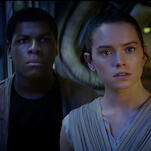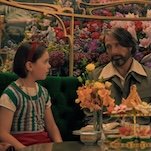Nancy was only the second bisexual recurring character on TV; Amanda Donohoe joined L.A. Law the year before as C.J. Lamb, who was established as bisexual, and shared the first kiss between two women in prime time with Michele Green’s Abby Perkins. However, the two characters never pursued a relationship, and Green later described the kiss as a “ratings stunt.”
Thing we were unhappiest to learn: Wikipedia’s formatting makes it look like we had a lot more early bi representation than we actually did. The page lists series by air date, which means long-running soap operas dominate the “premiered before 1990” list, although Guiding Light was on the air for 71 years before Olivia Spencer, grieving the death of love interest Gus Aitoro, ends up commiserating with, and then falling for, his widow. Other long-running shows, like General Hospital, All My Children, Emmerdale, EastEnders and even Doctor Who, introduced bi characters, but all well into their decades-long runs (and well into the 21st century).
Also noteworthy: The page casts a pretty wide net as far as who it considers bi. There’s a fair amount of representation for “someone who talks a lot about being bi but is only shown heteronormatively,” from how Eleanor Shellstrop “might be legit into Tahani,” to Bob Belcher being “prone to homoerotic situations,” to “many hints indicating” Stewie Griffin is bi or gay when he’s in fact a baby on a poorly written show that’s never above a cheap gay joke.
Best link to elsewhere on Wikipedia: For a broader look at queer representation on the small screen, Wikipedia has pages for LGBT characters in comedy, drama, soap operas, and all-encompassing television and radio. The comedy list in particular is interesting, as it’s more progressive than the drama list. ABC sitcom The Corner Bar put the first gay character on American TV in 1972. Three years later lesser-known Norman Lear series Hot l Baltimore (as in Hotel, with a letter burned out) gave us the first gay couple, and Barney Miller, which premiered the same year, worked closely with the National Gay Task Force to ensure their portrayal of recurring character Marty Morrison and his boyfriend, Darryl, and later Officer Zatelli, who had TV’s first coming-out storyline, were handled respectfully.
Drama wouldn’t catch up until 1981, when the Jeremy Irons-led adaptation of Brideshead Revisited aired in the U.K., and Hill Street Blues and Dynasty debuted in the U.S. The latter introduced a gay character, Steven Carrington, in its first episode, while the former introduced recurring character Eddie Gregg, a gay male sex worker, in its second season.
Further down the Wormhole: While sci-fi has often tackled LGBTQ+ issues via allegory, syndicated space opera Babylon 5 did so directly, with bisexual space station commander Susan Ivanova. What the show did handle allegorically was the assassination of John F. Kennedy, when villainous Morgan Clark is sworn in to replace the president he helped murder. The Kennedy assassination has been the subject of countless conspiracy theories, the simplest being the curse of Tippecanoe, which noted that every president elected in a year divisible by 20 died in office, starting with William Henry “Tippecanoe and Tyler Too” Harrison. Reagan broke the streak when he survived an assassination attempt, and George W. Bush wasn’t hit with anything harder than a shoe.
Russia has its own almost-certainly-a-coincidence theory about its leaders: bald-hairy, which notes that for nearly 200 years, every other Russian leader has had a full head of hair. We’ll comb through some history next week.









































